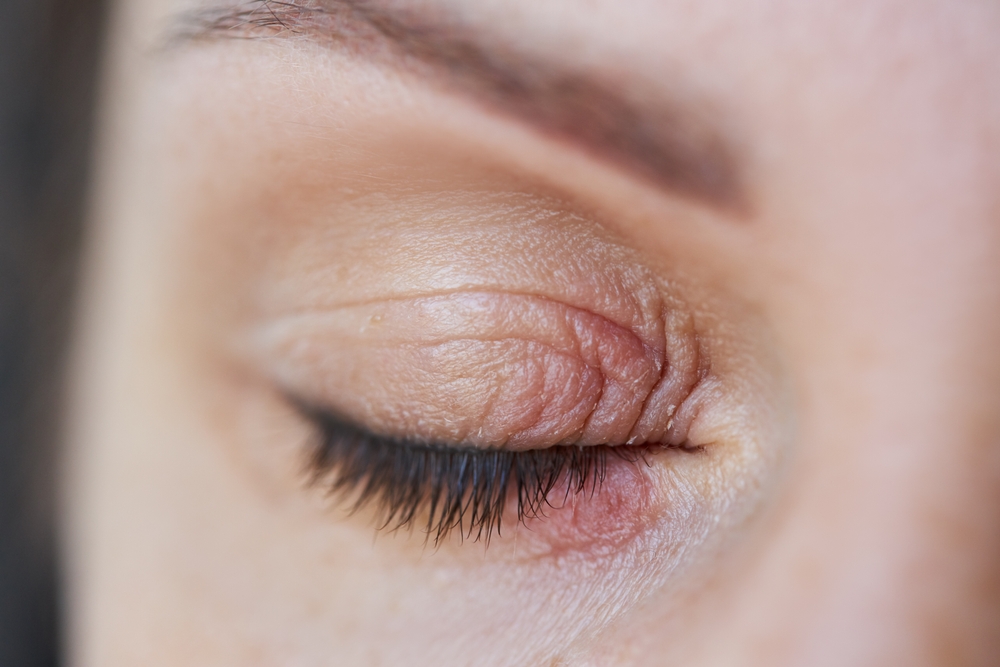What Causes Blepharitis?
Blepharitis can stem from a variety of sources, and understanding these can help you manage the condition more effectively. One of the primary culprits is the overgrowth of bacteria that normally live on the skin. These bacteria can create a biofilm that traps debris along the eyelid margin, leading to irritation and inflammation.
Another cause can be a dysfunction of the meibomian glands, which are specialized oil glands located in the eyelids. These glands are essential for maintaining a healthy tear film and eye surface. When they malfunction, it can result in eyelid inflammation. Additionally, skin conditions such as rosacea and dandruff (seborrheic dermatitis) can also contribute to the development of blepharitis.
Recognizing Symptoms of Blepharitis
The most noticeable symptom of blepharitis is an uncomfortable sensation in the eyes. If you frequently find yourself rubbing your eyes due to itchiness or irritation, it’s possible that blepharitis is to blame. This itchiness can be constant or may come and go, and it’s often accompanied by redness and swelling of the eyelids.
Additionally, you may notice other symptoms such as a gritty feeling in the eye, as if there were sand or debris trapped under your eyelid. Your eyes might also appear watery or have a sticky discharge, making it difficult to open them in the morning. In some cases, you may even experience sensitivity to light or blurry vision.
Crusting along the eyelashes is another common sign of blepharitis. This can make your eyelashes stick together and can sometimes lead to the loss of lashes. If you’re experiencing any of these symptoms, it’s crucial to take action and not dismiss them as mere irritation, as they can be indicative of blepharitis.
How to Manage Blepharitis at Home
Managing blepharitis involves a daily routine to keep your eyelids clean and free from irritants. One of the simplest yet most effective ways to do this is through regular eyelid hygiene. Begin by applying a warm compress to your eyelids for several minutes to loosen any crusts and oil debris. This also helps to unblock the oil glands.
Following the warm compress, use a clean, wet cloth or a cotton swab with a gentle, tear-free baby shampoo or a pre-prepared eyelid cleanser to carefully wipe your eyelids. This will help remove any crusts and excess oils that have built up along the lash line. Make sure to rinse your eyes thoroughly with warm water after cleaning.
In addition to keeping your eyelids clean, you can also make lifestyle changes to help manage blepharitis. For instance, if you wear contact lenses, ensure they are cleaned and handled properly to minimize the risk of infection. Similarly, if you have underlying skin conditions like rosacea or dandruff, managing these can also help reduce blepharitis symptoms.
When to See an Optometrist
While home management is crucial for controlling blepharitis, there are times when professional help is necessary. If your symptoms persist or worsen despite your best efforts at home, it’s time to consult an optometrist for treatment and management. They can offer a more targeted approach to dealing with blepharitis.
An optometrist can provide a thorough examination of your eyes and eyelids to confirm the diagnosis of blepharitis. They might also test for any related issues, such as dry eye syndrome or meibomian gland dysfunction. Based on their findings, they can recommend treatments.
An optometrist can also guide you on how to implement an effective eyelid hygiene routine and advise you on any lifestyle or dietary changes that could help. They may also recommend regular follow-up appointments to monitor your condition and make any necessary adjustments to your treatment plan.
Saying Goodbye to Itchy, Irritated Eyes for Good
Living with blepharitis can be challenging, but it doesn’t have to define your life. By understanding the causes and recognizing the symptoms of this condition, you can take proactive steps to manage it effectively. With the right combination of home care and professional guidance, you can say goodbye to the discomfort of itchy, irritated eyes for good.
If you’re ready to seek professional help or want more information on managing blepharitis, visit Vue Eye Boutique at our office in Dearborn Heights, Michigan. Please call (313) 895-7205 to schedule an appointment today.

